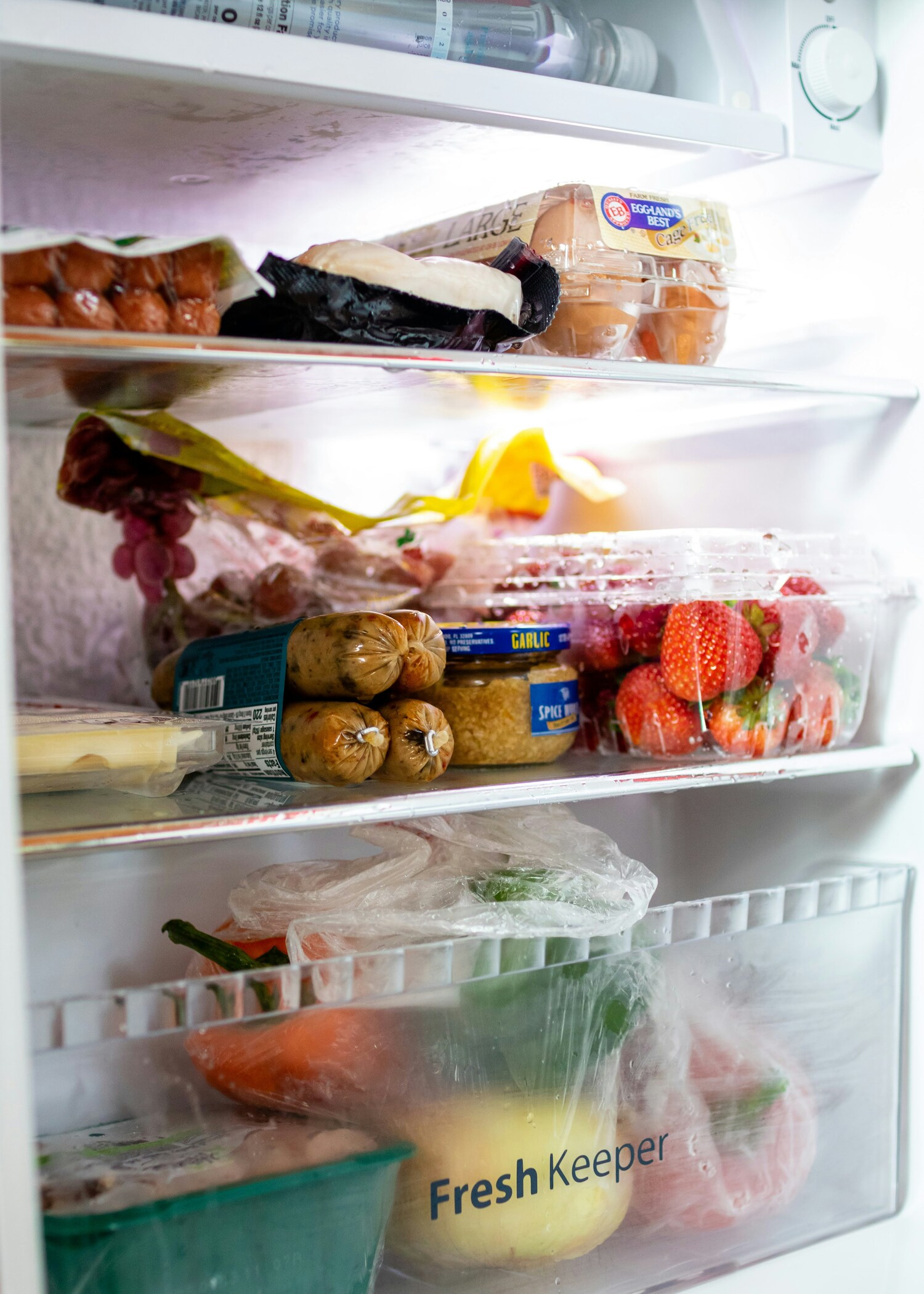We all like to think our kitchens are safe zones. But the truth is, many foodborne illnesses don’t come from restaurants or takeout—they start right at home. In fact, improper food storage is one of the leading causes of preventable stomach bugs, bacterial infections, and even more serious health issues.
The worst part? You may not even realize you’re making mistakes. That leftover chicken you put in the fridge “just for a day” or the rice you forgot to cover properly might be doing more harm than you realize. From wrong temperatures to risky containers, the habits we overlook in the kitchen can quietly turn dangerous.
Here are six common food storage mistakes that could be making you sick, along with how to fix them before your next meal.
6 Food Storage Mistakes That Are Making You Sick
1. Leaving Leftovers Out Too Long
It’s easy to get distracted after a meal. Maybe you’re enjoying conversation, watching TV, or just too tired to clean up right away. But letting cooked food sit out at room temperature for more than two hours (or just one hour if it’s hot and humid) creates a breeding ground for bacteria.
Dangerous microorganisms like Salmonella, E. coli, and Listeria thrive in what experts call the “danger zone”—temperatures between 40°F and 140°F. If food lingers there too long, bacteria can multiply rapidly, even if the food still looks and smells fine.
Many people reheat and eat these leftovers later, unaware that the damage has already been done. Symptoms like nausea, cramping, and diarrhea can follow within hours. The solution? Store food promptly in the fridge or freezer—don’t wait until the end of the evening.
2. Storing Food in the Wrong Part of the Fridge
Not all areas of your refrigerator are equally cold. And certain foods require colder environments to stay safe. For example, the door shelves tend to be the warmest part of the fridge, which makes them a poor choice for items like milk, eggs, or raw meat, yet that’s exactly where many people place them.
Raw meat should always be stored on the bottom shelf to prevent its juices from dripping onto other foods. Eggs, despite often being found in door compartments, should stay in the center of the fridge where the temperature is most stable. And dairy products last longer when stored in the coldest section, usually toward the back.
Misplacing these items can shorten their shelf life and increase the risk of cross-contamination or spoilage, even before the expiration date arrives.
3. Using Containers That Aren’t Food-Safe
We’ve all done it: reused old takeout containers, margarine tubs, or even plastic bags to store leftovers. But not all containers are designed for repeat use, especially with hot food. Some plastics can leach harmful chemicals like BPA or phthalates when exposed to heat or acidic ingredients.
What’s more, non-food-grade containers may not seal properly, exposing food to moisture, bacteria, and odors. And storing food in materials not meant for refrigeration can cause deterioration in both taste and safety.
To avoid these risks, use containers clearly labeled as food-safe and intended for refrigeration or freezing. Glass containers with airtight lids are a great long-term investment for both safety and sustainability.

4. Ignoring Expiration and “Use By” Dates
Many people treat expiration dates as loose suggestions, especially if the food looks okay. But while it’s true that some foods are still edible past their printed date, others can become dangerous even before they smell or taste off.
“Use by” or “best if used by” dates are about quality, but “expiration” dates, especially on dairy, meat, or prepackaged salads, should be taken seriously. These products can grow harmful bacteria or develop toxins as they age, which refrigeration alone cannot prevent.
It’s especially risky when expired items are stored improperly or repeatedly moved in and out of temperature-controlled spaces. When in doubt, toss it out. The cost of replacing food is far lower than a hospital visit due to food poisoning.
5. Keeping Dry Goods in Their Original Packaging
Pantry staples like flour, rice, and cereal often come in paper or thin plastic packaging that’s not meant for long-term storage. These materials do little to protect against moisture, pests, or oxygen, all of which can degrade food quality and lead to illness.
For instance, flour can develop mold in humid climates, and grains can attract insects like pantry moths. Once compromised, these products might not show visible signs until it’s too late. Even dry goods can harbor bacteria or toxins that affect your digestive system.
The solution? Transfer items into airtight containers as soon as you open them. Use glass, hard plastic, or metal canisters that seal tightly. It not only keeps your pantry organized but also dramatically reduces contamination risks.
6. Refreezing Thawed Meat or Seafood
If you’ve ever thawed a pack of chicken only to change dinner plans and toss it back in the freezer, you’re not alone, but you may also be taking a health risk. Once meat or seafood has been fully thawed, it should be cooked before refreezing.
When you refreeze thawed proteins without cooking them, you risk trapping bacteria that may have multiplied during the time they were out of the deep freeze. While freezing stops bacterial growth, it doesn’t kill existing bacteria.
If that meat is later thawed again and cooked improperly or consumed quickly, you could be introducing foodborne pathogens into your meals. To stay safe, only refreeze meat that’s been thawed in the refrigerator and hasn’t sat out for long periods. Better yet, cook it first and freeze the leftovers.
The Overlooked Health Risks Lurking in Your Kitchen
Our kitchens are full of habits that feel harmless…until they’re not. Food storage mistakes rarely show consequences right away, which is why many people don’t even realize these daily slip-ups could be affecting their health.
From improper refrigeration to expired pantry items and risky container use, these simple errors can add up. What starts as a shortcut can turn into nausea, food poisoning, or worse. Especially for older adults or those with compromised immune systems, even mild foodborne illness can have serious effects.
But here’s the good news: all of these mistakes are easily fixable. With just a little extra care, like using airtight containers, watching your fridge temps, and tossing out questionable leftovers, you can dramatically reduce your household’s risk of illness.
Are You Making These Food Storage Mistakes Without Realizing?
Food safety starts with what happens after your groceries are unpacked. The small decisions—where you store meat, how long leftovers sit out, or which container you grab—can have a big impact on your health.
If you’ve been unknowingly making these common food storage mistakes, now is the time to reassess and reset your habits. A safer kitchen doesn’t require fancy tools, just a little more attention to what’s going on behind the fridge door.
Have you ever gotten sick and suspected your own kitchen might be the cause? Which food storage habit are you planning to change first?
Read More:
These 7 Food Label Terms Are Meaningless, But Legally Allowed
How Food Labeling Loopholes Still Trick Even Informed Shoppers
Read the full article here
















